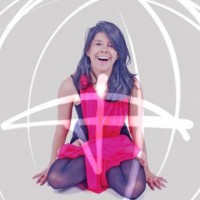“Yoga is a practice of healing…where the healing gradually unfolds on all levels of our being.”
We had the fortune of having Julie Gudmestad fly all the way from Portland, Oregon in the United States to Ashtanga Yoga Paris this past weekend, June eighth and ninth. During a two full-day workshop at a lovely and luminous yoga shala next to the Canal St. Martin in Paris, Julie covered the anatomy awareness of the hips, pelvis, and low back.
A licensed Physical Therapist and Certified Iyengar Yoga Instructor, Julie has been spreading the knowledge and healing powers of yoga since the 70s. She has been working with hard core athletes, practitioners with orthopedic problems and chronic pain, as well as stress-related injuries, amongst others.
“I believe yoga is a practice of consciousness. We all come to yoga with our issues, some with physical and others with emotional traumas. We all have places in our body that are guarded where we hold tension maybe from an old injury or just any stress of our everyday life; these are like holding centers…just dark places in our body.”
With her goniometer (medical ruler to measure body angles) in hand, Julie highlighted the importance of stopping at times to study about anatomy and empower ourselves to going beyond our body defenses and reaching our “weaker spots,” the places where we may not have strong awareness.
I was surprised by her way of integrating the healing principles of yoga with the precise Western medical knowledge. She was able to create a midway scenario between the strict Iyengar alignment and the dynamic flow of the Ashtanga Vinyasa Yoga system.
The mornings started by basic anatomy lectures and demos with the spine model. In the afternoons, we moved on to more hands-on practice by doing asanas standing, sitting and lying on the floor with various modifications for students’ needs.
We covered the basics of anatomical movement in the cardinal planes of the anatomical body:
- Sagittal or vertical plane for flexion or extension of our bones
- Coronal or frontal plane for abduction or adduction
- Transverse or horizontal place for internal or external rotation
“A healthy muscle is one that is able to be strong and flexible, and one that is able to contract, relax and lengthen. The main bones, joints and muscles of the muscul0-skeletal system used in the yoga practice, stabilizes our body with support and movement during each asana.”
Julie touched upon the three different muscle contractions:
- Concentric, which shortens the muscle;
- isometric, which keeps the muscle the same length during contraction;
- and eccentric, which lengthens during the contraction.
We also talked about the most important bones when working an asana, as well as the action, origin and insertion of muscles such as:
- Rectus adominis;
- External and internal obliques;
- Hip adductors and abductors;
- Gluteus medius and minimus;
- Hip external rotators;
- Hamstrings and gluteus maximus;
- Iliopsoas;
- Quadriceps;
- Erector Spinae.
Her playful and pedagogical style was fun as she shared lots of teaching anecdotes, many which were inspiring and practical. Interestingly, most of the workshop’s attendees were Ashtanga Vinyasa Yoga teachers and trainees. Julie’s advices were keen on having a clear voice added to an easy anatomical language when teaching. She stressed on the importance of giving helpful cues that can guide students’ alignment and understanding of the muscles that need to work in each asana.
Julie’s Iyengar yogic system served as a useful complement to deepening our practice in a safer and smarter way. Her hands-on exercises allowed us to work on the muscles we are not very much aware of when flowing in our predetermined and progressive Ashtanga asana series. She gave us a clear anatomical base and empowered many of us to better take care of our injuries and develop more consciousness in our practice.
“We should practice yoga to work our muscles and joints to be in their optimal alignment so that we can practice without injuries and use the asanas to help ourselves heal. By emphasizing proper alignment, we can reverse the effects of gravity while relieving the tensions of everyday life.”
Thank you Linda Munro and Gérald Disse for bringing her to teach us in Paris…Namaste!
To find out more about Julie check out her website.
Like elephant yoga on Facebook.
Ed: Bryonie Wise











Read 0 comments and reply